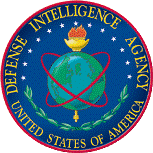United States Department of Defense
Date of this Version
1951
Document Type
Article
Citation
The minimum citation for this document is FT-F-82-1, 1951.
Abstract
The modern US Army vision of the technical intelligence developed during World War II. Shortly before World War II, Army Technical Services had been instructed to set up intelligence sections in the offices of their chiefs. The technical services were bureaus which supplied weapons, equipment, and services to the Army, managed the careers of officers in the related branch, trained specialists, and organized and trained special purpose military units. There were a number of technical services including the Chemical Warfare Service, the Medical Department, the Ordnance Department, etc. The Ordnance Department provided fire arms, artillery, combat vehicles, and related ammunition, equipment to the army. The Chief of Ordnance was the head of the Ordnance Department. His headquarters was the Office of the Chief of Ordnance in Washington. The offices of the chiefs of the technical services were part of the Headquarters, Department of the Army.
During World War II, the importance of studying foreign military equipment had become apparent and procedures for collecting and evaluating of equipment had been developed. Technical intelligence organizations in the technical services grew and operating procedures were developed and refined. Technical intelligence came to be defined as production and dissemination of intelligence about foreign weapons and equipment and production and dissemination of intelligence about the capabilities of military organizations analogous to those of the technical services in the US Army.
The technical intelligence organizations created during World War II survived the end of the war and continued to serve the army during the Cold War.
The Ordnance Intelligence office which prepared this translation was a staff section in the Office of the Chief of Ordnance. Translations of foreign manuals were a common intelligence product of army technical intelligence organizations because they facilitated testing and evaluation of foreign weapons and equipment. They also allow American forces to use captured Soviet weapons in combat or for training.
Included in
Defense and Security Studies Commons, Military and Veterans Studies Commons, Other Engineering Commons, Peace and Conflict Studies Commons, Soviet and Post-Soviet Studies Commons



Comments
(1) This document was digitized by the Morris Swett Technical Library at the Army Artillery School at Ft Sill, OK.
(2) This table was marked “Restricted” when issued.
Because the army reuses document numbers and titles, the date of the publication must be included to identify any given document.